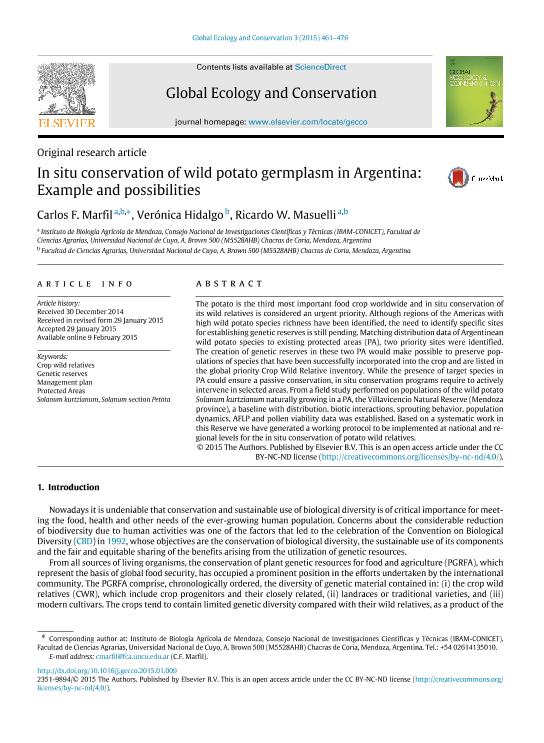Artículo
In situ conservation of wild potato germplasm in Argentina: Example and possibilities
Fecha de publicación:
01/2015
Editorial:
Elsevier
Revista:
Global Ecology and Conservation
ISSN:
2351-9894
Idioma:
Inglés
Tipo de recurso:
Artículo publicado
Clasificación temática:
Resumen
The potato is the third most important food crop worldwide and in situ conservation of its wild relatives is considered an urgent priority. Although regions of the Americas with high wild potato species richness have been identified, the need to identify specific sites for establishing genetic reserves is still pending. Matching distribution data of Argentinean wild potato species to existing protected areas (PA), two priority sites were identified. The creation of genetic reserves in these two PA would make possible to preserve populations of species that have been successfully incorporated into the crop and are listed in the global priority Crop Wild Relative inventory. While the presence of target species in PA could ensure a passive conservation, in situ conservation programs require to actively intervene in selected areas. From a field study performed on populations of the wild potato Solanum kurtzianum naturally growing in a PA, the Villavicencio Natural Reserve (Mendoza province), a baseline with distribution, biotic interactions, sprouting behavior, population dynamics, AFLP and pollen viability data was established. Based on a systematic work in this Reserve we have generated a working protocol to be implemented at national and regional levels for the in situ conservation of potato wild relatives.
Archivos asociados
Licencia
Identificadores
Colecciones
Articulos(IBAM)
Articulos de INST.DE BIOLOGIA AGRICOLA DE MENDOZA
Articulos de INST.DE BIOLOGIA AGRICOLA DE MENDOZA
Citación
Marfil, Carlos Federico; Hidalgo, Verónica Paulina; Masuelli, Ricardo Williams; In situ conservation of wild potato germplasm in Argentina: Example and possibilities; Elsevier; Global Ecology and Conservation; 3; 1-2015; 461-476
Compartir
Altmétricas




